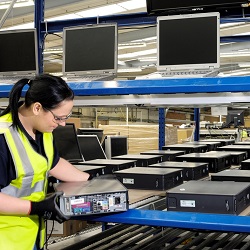
In the 1980s computers really began to make an impact and over the next 15-20 years that followed, they grew to become a standard household item. However, it wasn’t until the late 1990s that businesses and consumers started to consider what happened to this equipment after its useful life. As demand and awareness increased, various IT asset disposition (ITAD) services emerged that could refurbish and resell items, or collect and separate the obsolete equipment for scrap value.
Today we have come a long way in the lifecycle management of these devices. This term ITAD however has led to confusion as many haven’t fully grasped the definition.
In short, the term is defined as the business of safe and responsible management of retired electronic equipment. Generally, these services will include the following:
- Asset tracking – Accounting for every device as it moves through the disposition process.
- Legal compliance – Ensuring compliance to dispose of equipment legally and securely.
- Software harvesting – Removing software and licensing from retired devices for use in working equipment.
- Data destruction – Removal of all data through wiping, purging or shredding of storage media.
- Refurbishment/resale – Reselling equipment, extending the life of each device.
- Responsible recycling – Shredding of non-resalable electronics, in an audited and certified facility, to produce raw materials that can later be used to make new products.
There are a great deal of benefits in working with a strong ITAD vendor and while some offer credible services, very few can encompass all of the desired services without using partners or outsourcing to a separate entity. Working with the right professional can help ensure you’re maximizing the value of each device while simultaneously minimizing your environmental impact.
Click here for a complimentary RFP template to assist you in your IT asset disposition vendor selection.